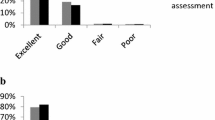Summary
The aim of this 3-month double-blind study was to assess the antihypertensive effect and acceptability of perindopril in comparison with atenolol in patients with mild to moderate essential hypertension. After a 4-week run-in placebo period, 40 patients with supine diastolic blood pressure (DBP) between 95 and 120mm Hg were randomised to receive perindopril 4mg or atenolol 50mg once daily. If supine DBP was > 90mm Hg, treatment was adjusted monthly: first by doubling the dose and then by the addition of chlorthalidone 50mg. Except for standing DBP, which was higher in the perindopril group than in the atenolol group, the 2 groups were homogeneous prior to treatment. After 3 months of active treatment, the decrease in supine blood pressure and standing DBP was not significantly different between the 2 groups. In contrast, the fall in standing systolic blood pressure was greater with perindopril than with atenolol. The percentage of patients (85%) who achieved supine DBP of ≤ 90mm Hg in the perindopril group was not significantly different from the atenolol group (80%). Monotherapy resulted in control of supine DBP in 55% of the perindopril group and 65% of the atenolol group; the addition of chlorthalidone resulted in control of supine DBP in 30 and 15%, respectively. No patient was withdrawn from the study. The nature and incidence of side effects were similar between the 2 groups. Changes in laboratory parameters were minor and not significantly different between the 2 groups.
Perindopril was as effective as atenolol in lowering blood pressure. Clinical and biological acceptability was satisfactory and similar with both drugs. Perindopril may therefore be recommended as first-line treatment for mild to moderate essential hypertension.
Similar content being viewed by others
References
Ajayi AA, Lees KR, Reid JL. Effects of angiotensin converting enzyme inhibitor, perindopril, on autonomic reflexes. European Journal of Clinical Pharmacology 30: 177–182, 1986
Arr SM, Burgess J, Cooper WD, Currie WJC, Davidson C, et al. A comparative study of enalapril and atenolol in moderate to severe hypertension. British Journal of Clinical Pharmacology 18: 292P, 1984
Asmar RG, Pannier BM, Santoni JP, Safar ME. Angiotensin converting enzyme inhibition decreases systolic blood pressure more than diastolic pressure as shown by ambulatory blood pressure monitoring. Journal of Hypertension 6 (Suppl. 3): 579–581, 1988
Bussien JP, Fasanella d’Amore T, Perret L, et al. Single and repeated dosing of the converting enzyme inhibitor perindopril to normal subjects. Clinical Pharmacology and Therapeutics 39: 554–558, 1986
Coulter DM, Edwards IR. Cough associated with captopril and enalapril. British Medical Journal 294: 1521–1523, 1987
Heel RC, Brogden RN, Speight TM, Avery GS. Atenolol: a review of its pharmacological properties and therapeutic efficacy in angina pectoris and hypertension. Drugs 17: 425–460, 1979
Helgeland A, Strommen R, Hagelund CH, Tretti S. Enalapril, atenolol and hydrochlorothiazide in mild to moderate hypertension. Lancet 1: 872–875, 1986
Husserl FE, Messerli FH. Adverse effects of antihypertensive drugs. Drugs 22: 188–210, 1981
Lees KR, Green ST, Reid JL. Influence of age on the pharmacokinetics and pharmacodynamics of perindopril. Clinical Pharmacology and Therapeutics 44: 418–425, 1988
Lees KR, Reid JL. Haemodynamic and humoral effects of oral perindopril, an angiotensin converting enzyme inhibitor, in man. British Journal of Clinical Pharmacology 23: 159–164, 1987a
Lees KR, Reid JL. The haemodynamic and humoral effects of treatment for one month with the angiotensin converting enzyme inhibitor perindopril in salt replete hypertensive patients. European Journal of Clinical Pharmacology 31: 519–524, 1987b
Lees KR, Reid JL, Scott MGB, Hosie J, Herpin D. Captopril versus perindopril: a double-blind study in essential hypertension. Journal of Human Hypertension 3: 17–22, 1989
Luccioni R, Frances Y, Gass R, Schwab C, Perret L. Evaluation of the dose effect relationship of a new ACE inhibitor (perindopril) by an automatic blood pressure recorder. European Heart Journal 9: 1131–1136, 1988
Morgan T, Anderson A, Wilson D, Murphy J, Nowson C. The effect of perindopril on blood pressure in humans on different sodium intakes. Journal of Cardiovascular Pharmacology 10 (Suppl. 7): 5116–5118, 1987
Report of the Joint National Committee on detection, evaluation and treatment of high blood pressure 1988. Archives of Internal Medicine 148: 1023–1038, 1988
Weinberger MH. Comparison of captopril and hydrochlorothiazide alone and in combination in mild to moderate essential hypertension. British Journal of Clinical Pharmacology 14 (Suppl. 2): 127S–131S, 1982
West JNW, Smith SA, Stellerd TJ, Littler WA. Effects of perindopril on ambulatory intra arterial blood pressure, cardiovascular reflexes and forearm blood flow in essential hypertension. Journal of Hypertension 7: 97–104, 1989
Williams GH. Converting enzyme inhibitors in the treatment of hypertension. New England Journal of Medicine 319: 1517–1525, 1988
Author information
Authors and Affiliations
Rights and permissions
About this article
Cite this article
Villamil, A., Weber, C., Desche, P. et al. Antihypertensive Effect and Acceptability of Perindopril. Drug Invest. 3, 308–314 (1991). https://doi.org/10.1007/BF03259743
Published:
Issue Date:
DOI: https://doi.org/10.1007/BF03259743




